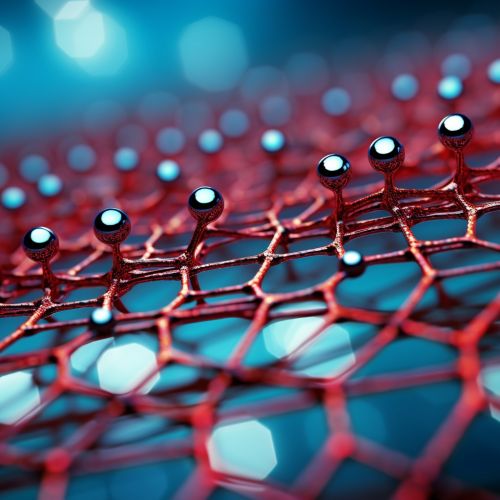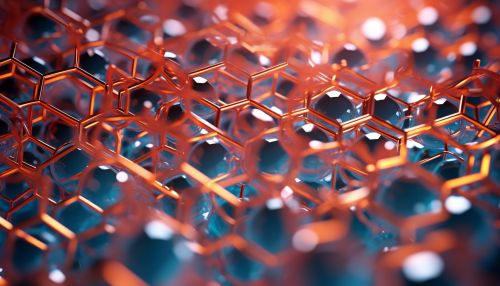Application of Nanomaterials in Water Purification
Introduction
Nanomaterials are a class of materials with nanoscale dimensions, typically less than 100 nanometers. These materials have unique physical and chemical properties that make them suitable for a variety of applications, including water purification. This article explores the application of nanomaterials in water purification, detailing the types of nanomaterials used, their mechanisms of action, advantages, and challenges.


Types of Nanomaterials Used in Water Purification
Various types of nanomaterials are used in water purification, including nanoparticles, nanocomposites, nanofibers, and nanopores. These materials are chosen based on their unique properties, such as high surface area to volume ratio, reactivity, and ability to adsorb or react with contaminants.
Nanoparticles
Nanoparticles are particles with dimensions in the nanometer range. They are used in water purification due to their high surface area to volume ratio, which allows for efficient adsorption of contaminants. Examples of nanoparticles used in water purification include silver nanoparticles, iron nanoparticles, and titanium dioxide nanoparticles.
Nanocomposites
Nanocomposites are materials that combine nanoparticles with other materials to enhance their properties. In water purification, nanocomposites are often used to improve the stability and reusability of nanoparticles. Examples of nanocomposites used in water purification include carbon nanotube composites and graphene composites.
Nanofibers
Nanofibers are fibers with diameters in the nanometer range. They are used in water purification due to their high porosity and surface area, which allows for efficient filtration of contaminants. Examples of nanofibers used in water purification include polymer nanofibers and ceramic nanofibers.
Nanopores
Nanopores are pores with diameters in the nanometer range. They are used in water purification due to their ability to selectively filter contaminants based on size. Examples of nanopores used in water purification include membrane nanopores and zeolite nanopores.
Mechanisms of Action
Nanomaterials purify water through various mechanisms, including adsorption, photocatalysis, and filtration.
Adsorption
Adsorption is the process by which contaminants adhere to the surface of a material. Nanomaterials, due to their high surface area to volume ratio, are excellent adsorbents. They can efficiently remove a wide range of contaminants, including heavy metals, organic pollutants, and microbes.
Photocatalysis
Photocatalysis is the acceleration of a chemical reaction by light. Certain nanomaterials, such as titanium dioxide nanoparticles, can act as photocatalysts. When exposed to light, these materials generate reactive oxygen species that can degrade organic pollutants.
Filtration
Filtration is the process of separating particles from a fluid by passing it through a porous medium. Nanomaterials, such as nanofibers and nanopores, can act as filters. They can efficiently remove particles, microbes, and other contaminants from water.
Advantages of Using Nanomaterials in Water Purification
The use of nanomaterials in water purification offers several advantages. These include high efficiency, versatility, and the potential for reuse.
High Efficiency
Nanomaterials are highly efficient at removing contaminants from water. This is due to their high surface area to volume ratio, which allows for efficient adsorption, and their ability to act as photocatalysts or filters.
Versatility
Nanomaterials can remove a wide range of contaminants, including heavy metals, organic pollutants, and microbes. This makes them versatile tools for water purification.
Potential for Reuse
Certain nanomaterials, such as nanocomposites, can be reused. This can reduce the cost and environmental impact of water purification.
Challenges and Future Directions
Despite their advantages, the use of nanomaterials in water purification also presents several challenges. These include issues related to stability, scalability, and environmental impact.
Stability
The stability of nanomaterials in water is a critical issue. Some nanomaterials, such as nanoparticles, can agglomerate or dissolve in water, reducing their effectiveness.
Scalability
The scalability of nanomaterial-based water purification technologies is another challenge. While these technologies have shown promise in the lab, scaling them up for large-scale use is a complex and costly process.
Environmental Impact
The environmental impact of nanomaterials is a concern. Some nanomaterials, such as silver nanoparticles, can be toxic to aquatic organisms. More research is needed to understand the environmental impact of nanomaterials and to develop strategies to mitigate their potential risks.
Despite these challenges, the use of nanomaterials in water purification is a promising field. Future research will likely focus on improving the stability and scalability of nanomaterial-based technologies, understanding their environmental impact, and developing new types of nanomaterials for water purification.
